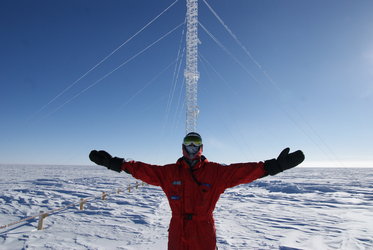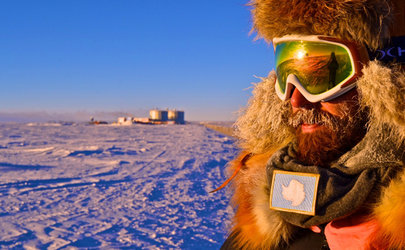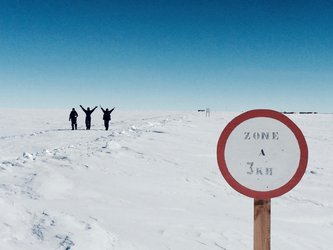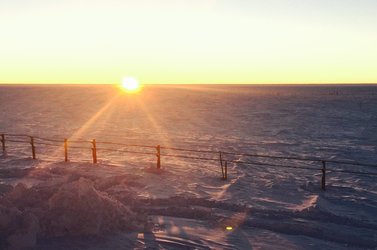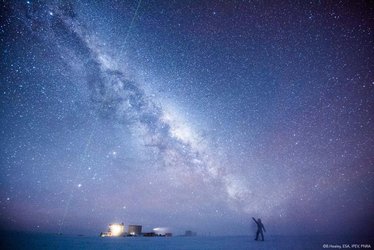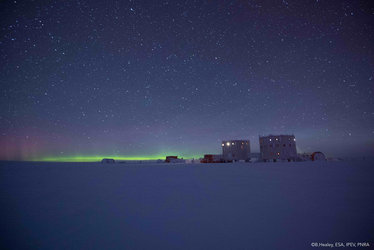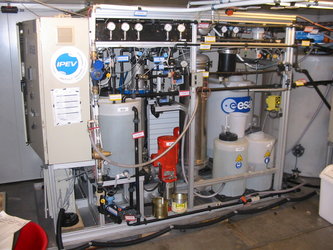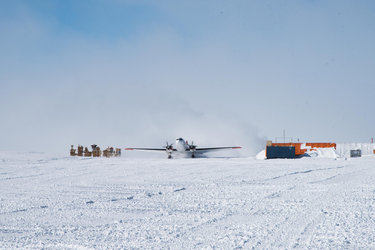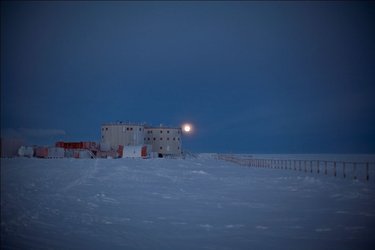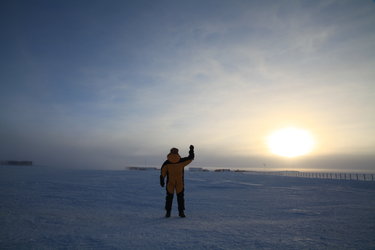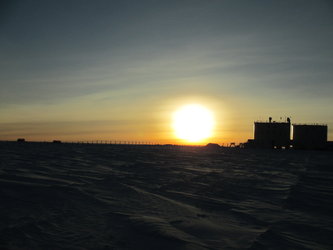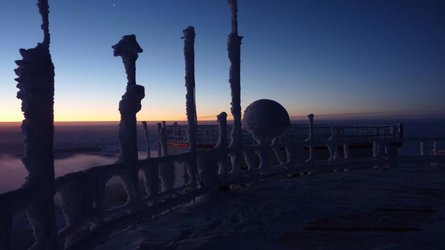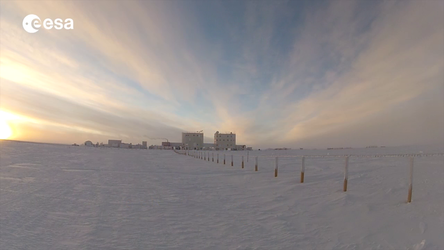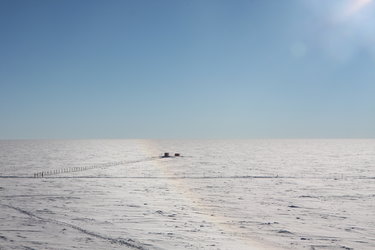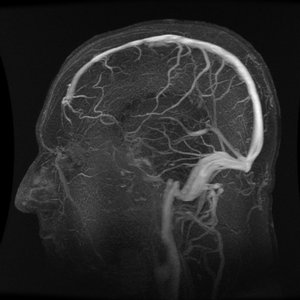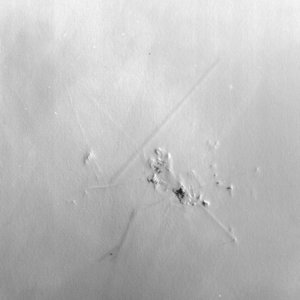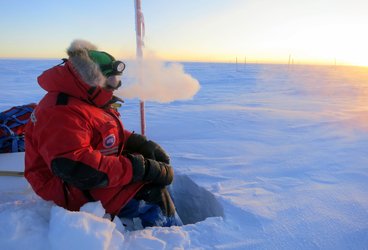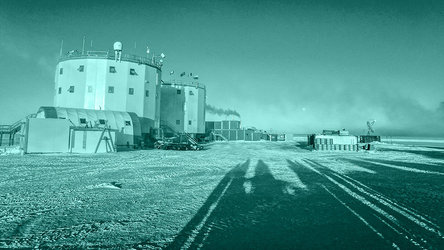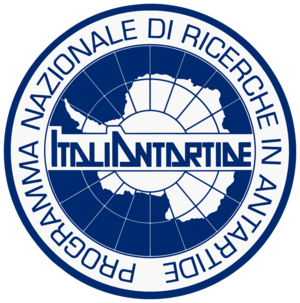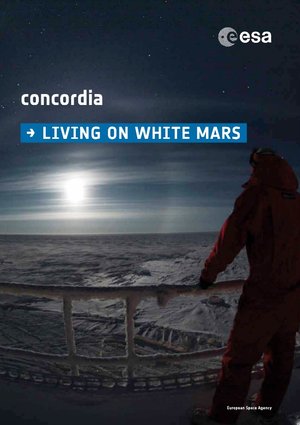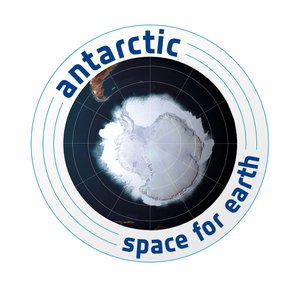Welcome to Concordia
On arrival at Concordia, a period of adjustment is required, similar to astronauts in space. The high altitude, extreme cold, dry air and new sensations can overwhelm the human brain as it adjusts to the new environment.
Physical changes such as hypoxia – lack of oxygen – chapped lips and sore throats never go away and are a constant nuisance to people living in Concordia. Humidifiers in bedrooms help against the dry air, and exercise is one way to adapt to the low levels of oxygen because it helps the body produce more red blood cells.

The base consists of two towers of about 18 m in diameter, connected by an enclosed walkway. The station is quite large at 1500 m² for up to 16 people, nearly 100 m² per person. Activities in the towers are separated into noisy and quiet. Spread over three levels, the restaurant, social rooms, gym and workshops are in the ‘noisy’ tower, whereas the laboratories, sleeping quarters, hospital and radio rooms are in the ‘quiet’ tower.
The base is powered by three generators that supply electricity and heat to keep the –80°C temperatures at bay. The generators run in pairs with one available as back-up – out here, you don’t want to run out of electricity or heating. The diesel that powers the generators itself needs to be heated to prevent it freezing.
Water from washing and cooking is recycled as much as possible using a unit based on knowledge from ESA’s life support team.
For drinking and cooking, snow from a protected area is melted into water. As this water contains few minerals the Concordia chef needs to take this into account when preparing meals.

Scientific instruments are dotted around the base outside. One of the tallest towers in Antarctica stands proud about a kilometre away. It holds devices to measure atmospheric data such as wind speed and humidity. Many instruments observe the snow and ice to help calibrate Earth observation satellites, including ESA’s.
Climbing the tower for maintenance or installing new equipment is not to be taken lightly. Climbing 40 m to the top of the tower in sub-zero conditions with little oxygen requires determination and strong nerves. If the repair work requires removing gloves remember that only a few seconds of exposure to the elements can cause frostbite. On the other hand, the view can be breathtaking.
A seismic vault was excavated near the base that extends 15 m under the snow and is used for experiments inside the Antarctic ice. A trapdoor leads down to a long tunnel. At the end of the tunnel is a series of ladders to the vault itself. It is bitterly cold beyond the trapdoor, and it gets worse venturing further into the vault. The air quickly mists up from breathing so visibility is low. The vault’s temperature is a very stable –59°C, making the environment not particularly suited to human beings and electrical equipment.

Above ground, nearer to base, are many telescopes as well as two wooden platforms to observe the heavens. Wood is a very suitable material to build with in the cold expanse of Dome C as no fungi that rot wood can survive.
Concordia has its own airport in the form of a runway over 1.5 km long. Tractors, bulldozers, skidoos and other machinery are stored during the winter in a tunnel sheltered from the elements by a large pile of snow packed in front of the entrance. One excavator is kept outside during winter to clear the snow in the summer when temperatures and the Sun rise once again.




